 |
 |
 |
| |
Time is of the essence: clinical frailty among a cohort of Indigenous peoples aging with HIV in Ontario, Canada
|
| |
| |
AIDS 2024 July 20-26 Munich
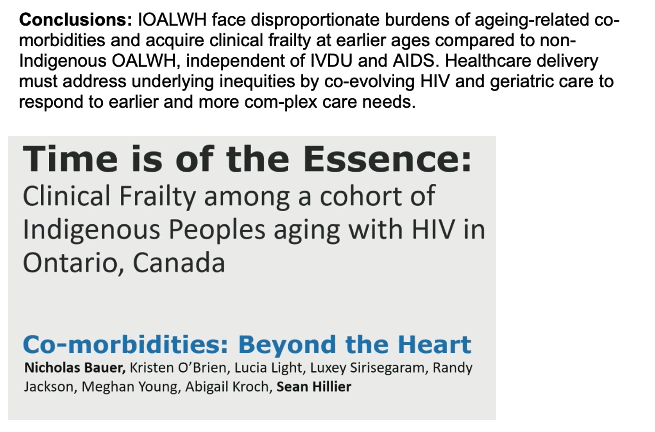
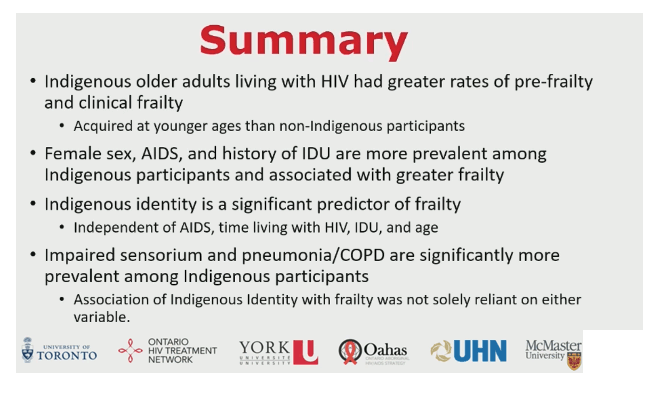
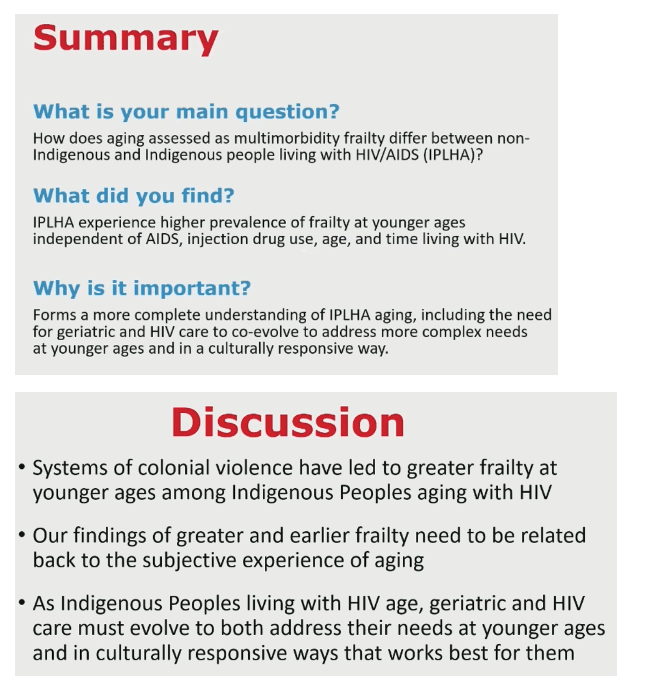
ABSTRACT
Background: As the cohort of people living with HIV (PLHIV) grows older on average, geriatric and HIV care must co-evolve. Within this cohort, Indigenous Peoples remain overrepresented. The age-ing experience for Indigenous older adults living with HIV (IOALWH) involves the intersecting effects of systemic colonial oppression, intergenerational trauma, continued racist violence, service inacces-sibility and socio-economic disadvantage. These factors have con-tributed to increasing health disparities within Indigenous commu-nities, translating to higher co-morbidity burden and worse health outcomes. Owing to both their HIV status and Indigenous identity, IOALWH may face disproportionate burdens while ageing. This study aims to characterize clinical frailty in a cohort of IOALWH. Methods: The OHTN Cohort Study (OCS) is an open longitudinal cohort of PLHIV at 15 clinical sites in Ontario, Canada, with cur-rently over 5000 people under active follow-up. The study includes data abstraction from clinical records, laboratory reports and an annually administered questionnaire. We assessed clinical frailty using the modified frailty index (mFI), approximated with aggrega-tions of ICD-10 codes from diagnostic records. Presentation of a frailty-related condition contributes to a frailty score. A score of 0 represents no clinical frailty, 1−2 is pre-frailty and ≥3 is clinical frailty.
Results: Data from 6582 participants (n = 330 Indigenous) and diag-nostic reports from 1940 to 2018 were included. IOALWH faced greater rates of pre-frailty (49.7% vs. 41.1%) and clinical frailty (8.8% vs. 5.8%). IOALWH acquired all clinical indicators at earlier median ages, including HIV (31 vs. 34), AIDS (36 vs. 40), pre-frailty (40 vs. 44) and clinical frailty (51 vs. 56). Certain frailty indicators were overrepresented among IOALWH compared to non-Indigenous OALWH, including impaired sensorium (+21.1% greater prevalence), chronic inflammatory lung disease (COPD)/pneumonia (+7.6%), dia-betes (+2.3%) and non-independent functional status (+2.3%). In a multivariate logistic model, intravenous drug use (IVDU; OR 1.97, p<.0001), AIDS (OR 1.57, p<.0001) and Indigenous identity (OR 1.57, p<.0001) were found to be independent predictors of pre-frailty and clinical frailty.
Conclusions: IOALWH face disproportionate burdens of ageing-related co-morbidities and acquire clinical frailty at earlier ages compared to non-Indigenous OALWH, independent of IVDU and AIDS. Healthcare delivery must address underlying inequities by co-evolving HIV and geriatric care to respond to earlier and more com-plex care needs.
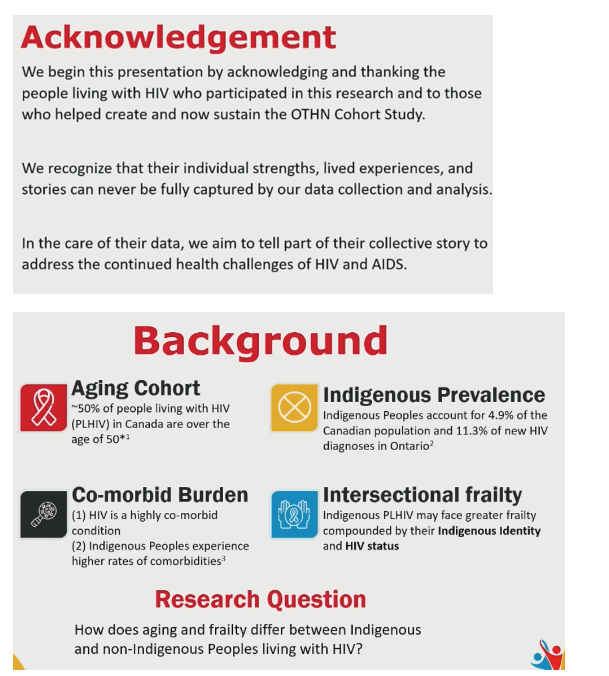
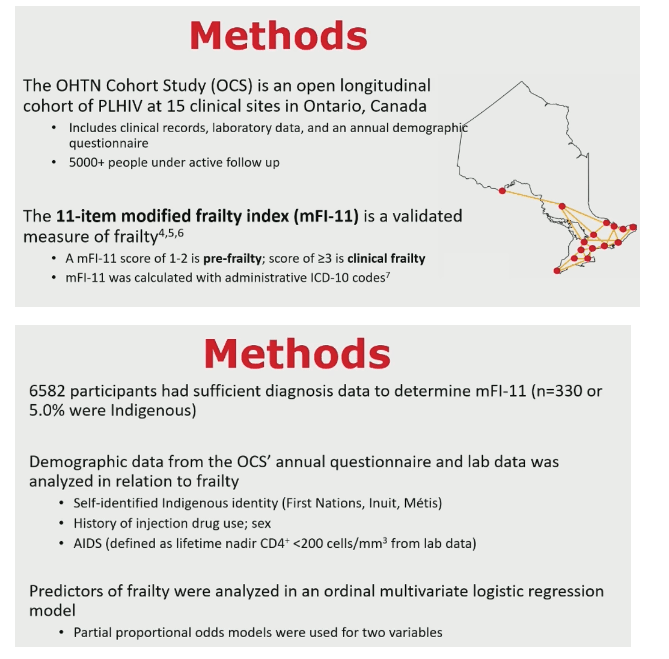
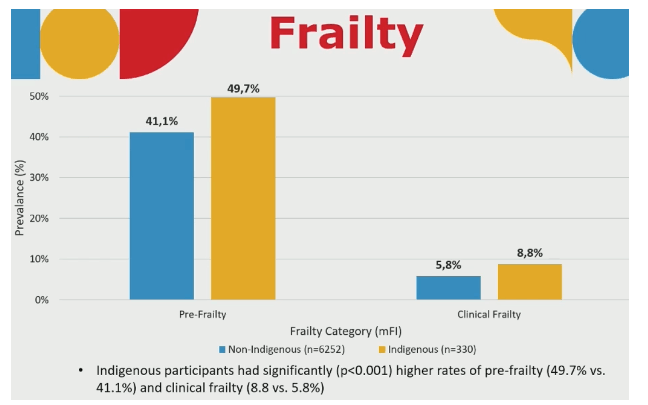
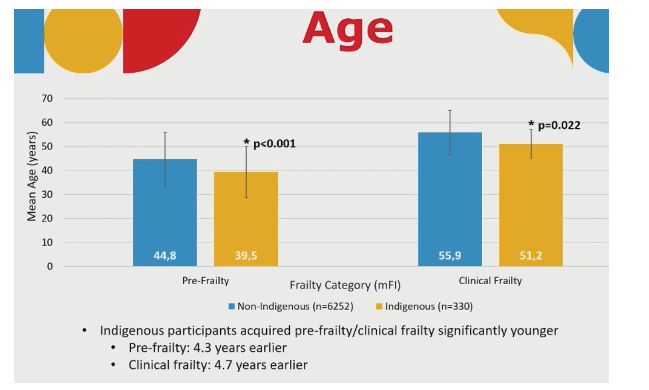
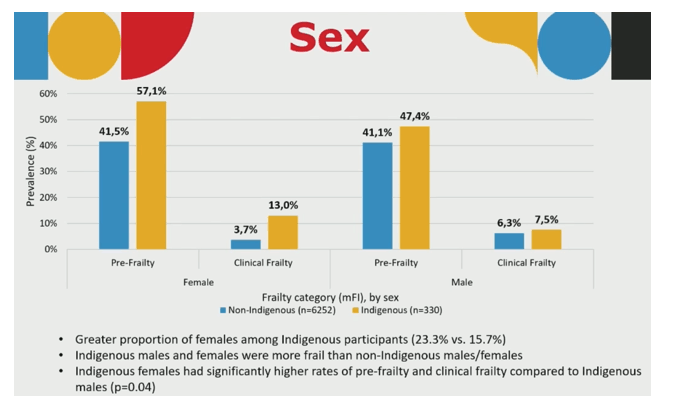
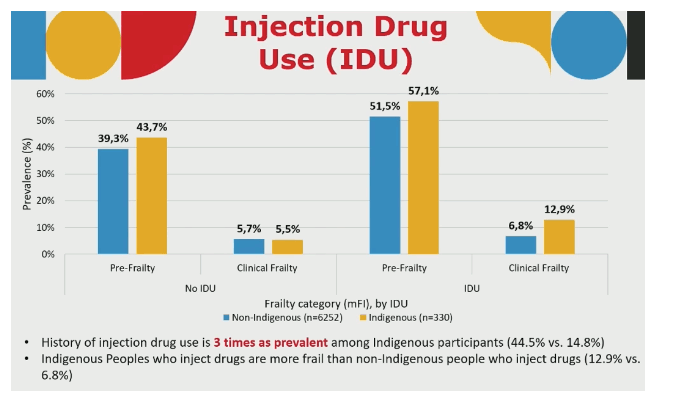
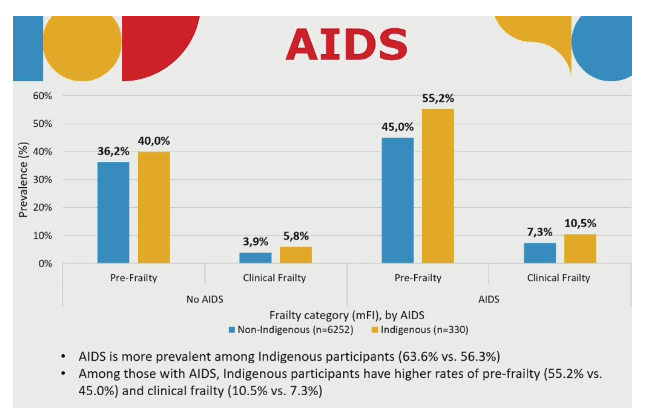
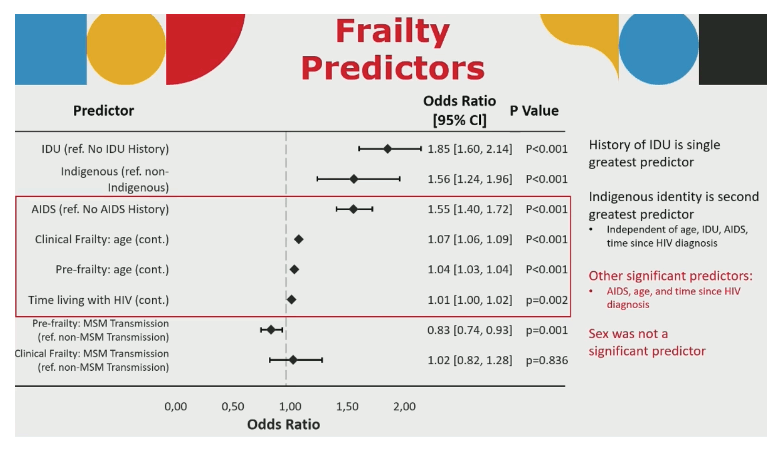
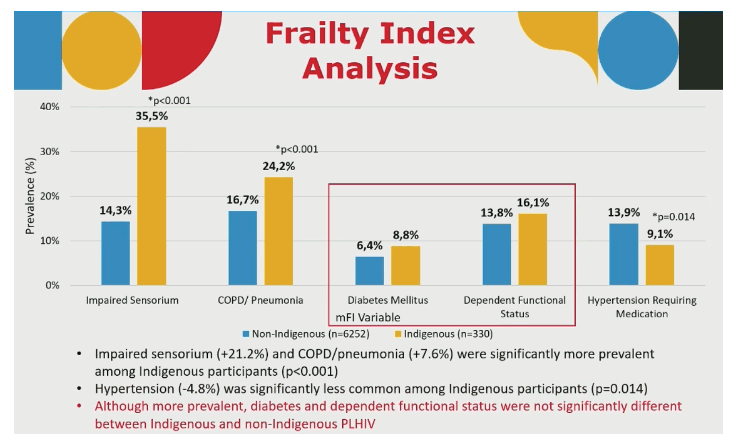
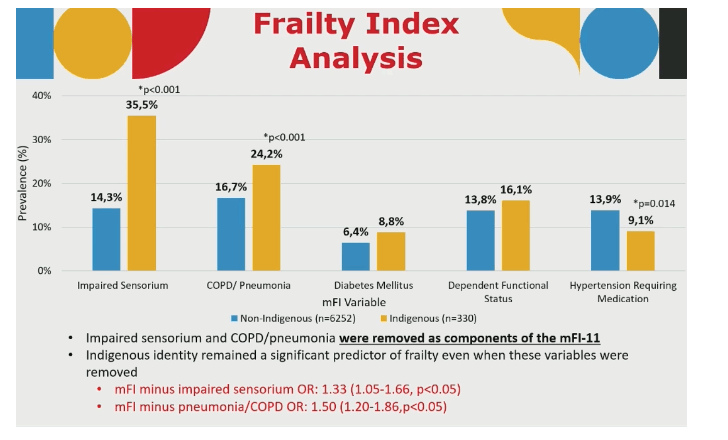
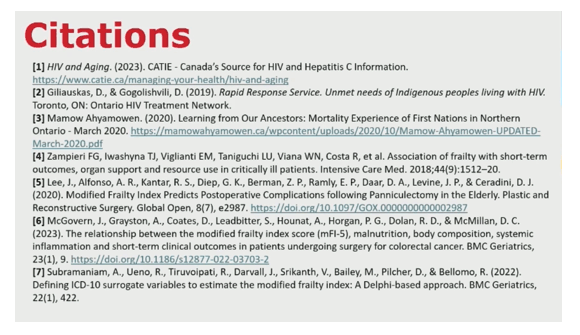
|
| |
|
 |
 |
|
|